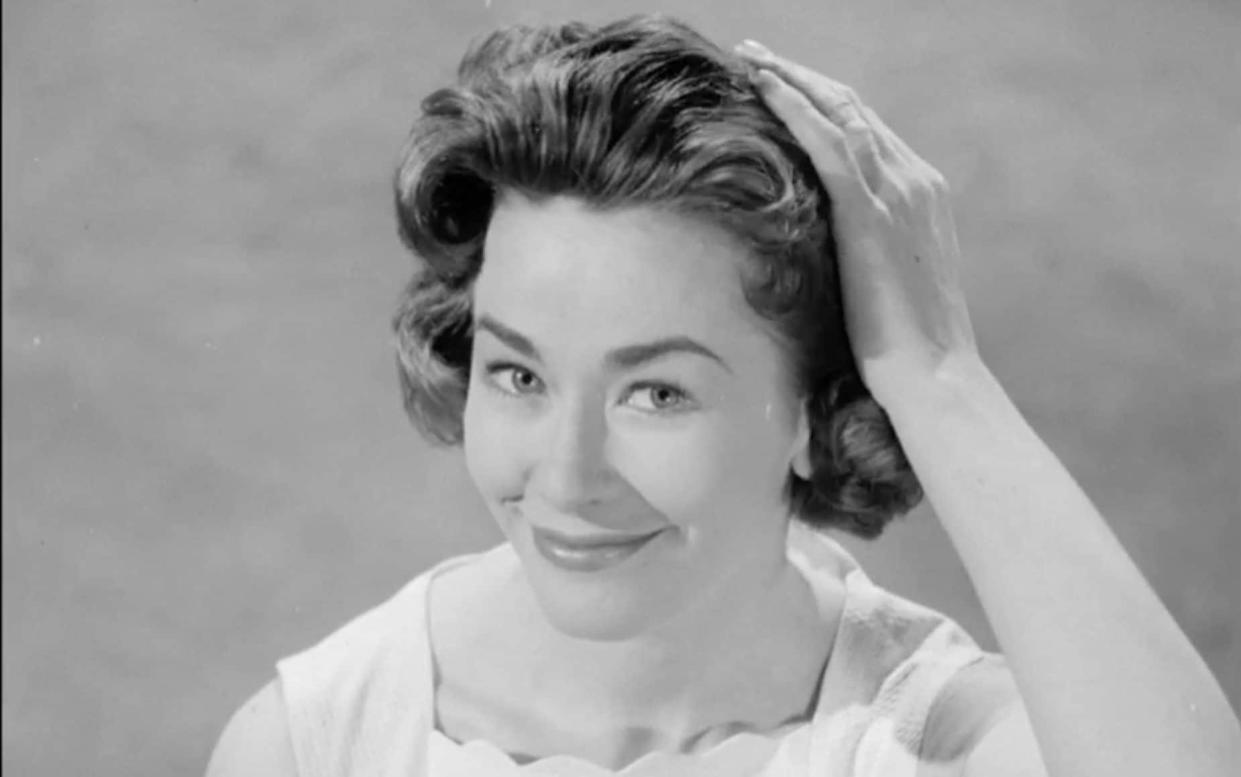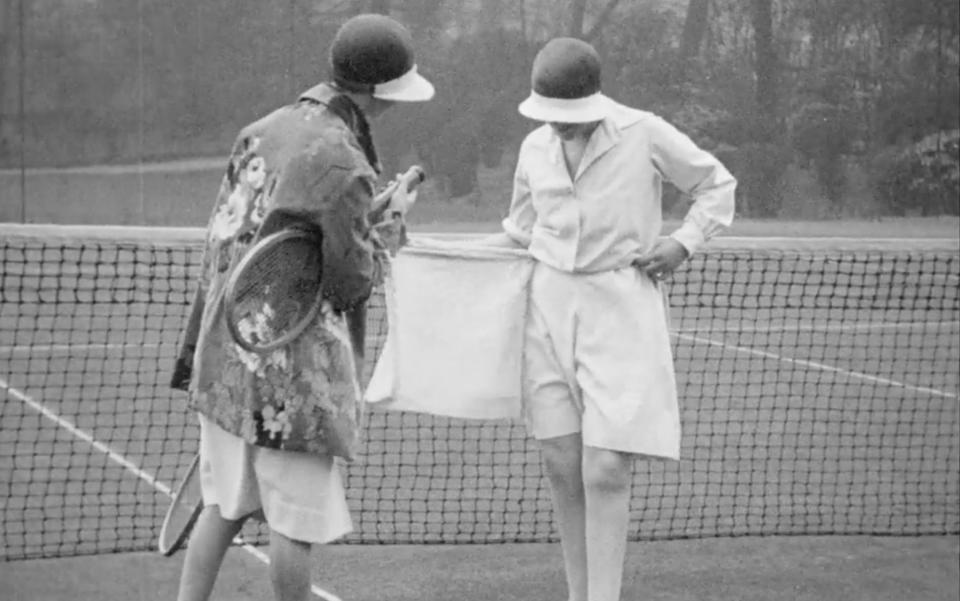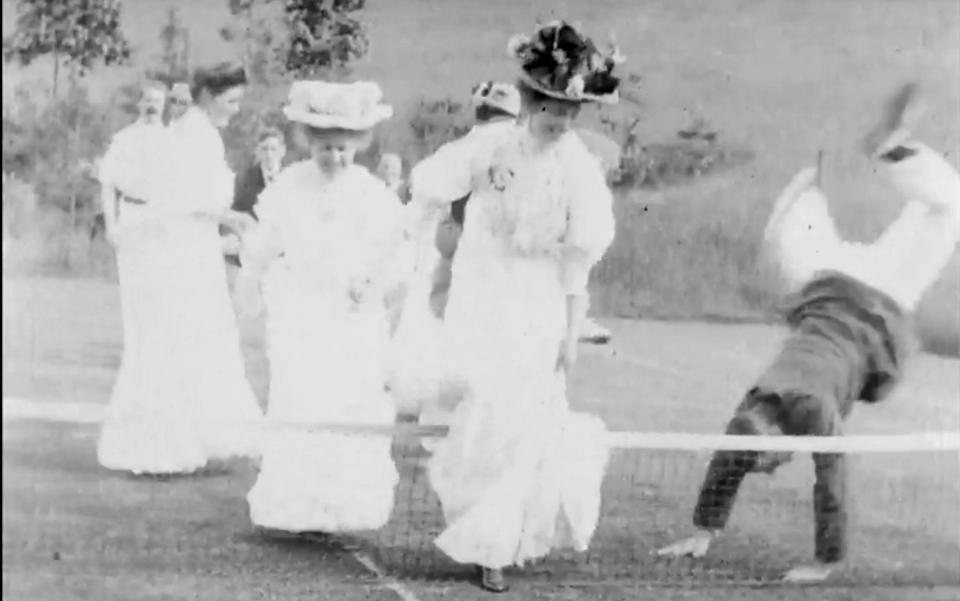Anyone for equality? Unseen archive featuring Sue Barker shows how tennis served women’s cause

For female tennis players and their fans, the road to true equality may seem long and hard.
Go back a century, though, and the seeds of parity between the sexes had already been sown, according to an unseen archive of films.
A treasure trove of tennis films, due to be made available to the public for the first time, shows how the enlightened tennis establishment push the sport as “the most democratic game for both sexes” as far back as 1924.
Players in corsets were lauded on film, with girls encouraged to pick up a tennis racket to emulate their role models.
As the years rolled on, adverts aimed at women tried to woo them via tennis, promising hair products and “nimble” bread would improve their game.
More than 70 films, from 1903 onwards, are to be released by the British Film Institute; most available to the public for the first time since they were originally broadcast.

They include famous faces such British tennisstar Fred Perry, Australia’s multi-grand slam winner Ken Rosewall, as a 15-year-old Sue Barker playing in 1971.
One of the most remarkable, from 1926, shows George VI - then the Duke of York - playing at Wimbledon.
It is the only footage of the first and only member of the Royal family playing in the real tournament, with the Queen’s father showing off his extraordinary and flamboyant serve in front of the cameras.
Playing in the Men's Doubles with Louis Greig, with his wife watching on from the stands, he lost in the first round.
A film from the same year, 1926, sees King George V and Queen Mary present trophies to Wimbledon winners, including the rather portly Maud Watson, by then the oldest female competitor.
The hugely successful player had first entered the tournament in 1884, wearing a white corset and petticoats.
Similar outfits can be seen in the earliest film in the collection, entitled “Jumping Over the Tennis Nets” and taken from a collection of home movies by Alfred Ernest Passmore.

Showing his family in holiday spirits, Edwardian women are seen attempting - not always successfully - to hop over a low tennis net in full skirts and hats.
By the 1920s, filmmakers appear determined to convince women to pick up their tennis rackets.
A 1926 newsreel entitled “Detachable Dress for Sportswomen” details a fetching new fashion, for a hidden pair of baggy shorts hidden behind a loose skirt to protect players’ modesty.
A model is seen demonstrating how to bend down to pick up a ball without showing her knickers, with the garment described by the BFI as the “height of sportswear innovation”.
The 1922 film Tennis and How to Play It shows a glamorous Suzanne Lenglen greeting autograph hunters whilst draped in a fur coat.
Decades later, in 1955, an advert for Twink hair lotion reassures women “there’s no need to be worried about your good looks on the tennis court”, advertising a solution for “sporting types” who wanted to remain stylish.
It is followed in 1964 with an extraordinary advert promising women can “eat all the bread you want” while being a tennis ace, promising: “Eat Nimble, be nimble”.
More serious films show player Ann Jones speaking in 1968 about equal pay, arguing women should receive for two thirds of the men’s salary: an improvement from the £300 prize money for women and £1000 for men in her recent British Hard Court Championships.
Gosta Johansson, curatorial consultant on the BFI Tennis on Film collection, said the films would give tennis fans the chance to see big names they will have read and heard about in action on film for the first time.
“What surprised me with many of these films is how equally they seem to treat the men’s and women’s games,” he added.
“There’s very little feeling of women’s tennis being inferior to men’s at any point.”
He and his team scoured the BFI archives, National Archive and regional collections to come up with the best films, which are likely to have been shown on cinema screens or at local clubs even before television was invented and in many cases have not been seen in public since.
The collection, Tennis on Film, is available to watch for free on the BFI Player from Monday.

 Yahoo News
Yahoo News 
